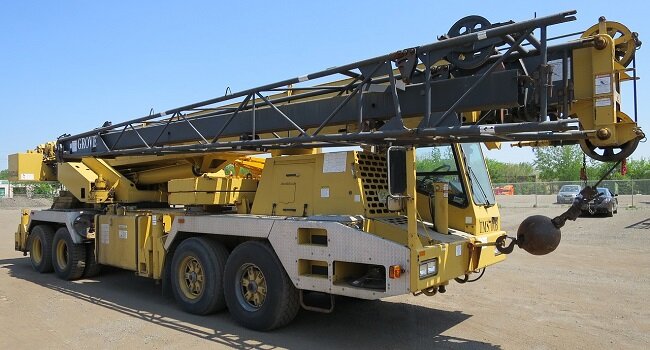If you’re in the construction industry, you’ve no doubt had experience with heavy duty equipment like cranes, but perhaps not all types. While they can all lift heavy objects, some are better for certain situations than others. Before planning your next building project or checking out the market for crane sales in Australia, it’s important you wrap your head around the different types of cranes in construction, as well as their benefits and operational requirements. In this post, we’re going to dive deep into the world of cranes and go through all the types so you know exactly what to choose during your next project.
1. Telescopic and Hydraulic Cranes
Telescopic and hydraulic cranes are extremely common in the construction industry and you’ve likely seen these cranes in action at construction sites already. While telescopic cranes are particularly useful for working on projects with varying heights, hydraulic cranes, are better used for heavier objects. This is because telescopic cranes have the ability to reach varying lengths by using their unique design. Hydraulic cranes, on the other hand, are able to lift heavier loads and take more pressure due to their hydraulic systems. Both of these cranes are indispensable in the construction industry and serve each individual purpose quite well depending on your needs onsite.
2. Tower Cranes
Tower cranes are another type of crane that play a big role in many construction projects. Due to their ability to reach incredibly high, they are usually used in cities or high-rise buildings. You’ve probably already seen them towering along some of the high-rising apartments and building locally and they can be rather impressive. These machines can not only reach amazing heights but tower cranes also can carry a considerable amount of weight, perfect for the most ambitious projects. But the downside is that their height and carrying capacity mean that they are not the most maneuverable of cranes.
3. Mobile Cranes
Mobile cranes may not be as impressive as tower cranes since they are not as tall but their maneuverability is what sets them apart from the competition. These cranes are pretty unique as they have an impressive combination of flexibility and manoeuvrability and can lift or move loads weighing several tonnes with accuracy. This is because they have a flexible crane fitted on an appropriate vehicle. They are great for multiple purposes such as working on city buildings with limited space, moving cargo or even custom housing projects. While they might not have the massive height capacity of tower cranes, these pieces of machinery are able to get many jobs done efficiently and move around easily.

4. Overhead Cranes
The sight of massive overhead cranes working in factories or construction may be quite rare to those not in these industries but there are other important types of cranes worth mentioning. These towering machines are designed to lift and transport heavy loads within buildings and are usually installed in the roofing of factories (hence the name overhead) and are vital in these settings. While they come in different types, whether you’re looking for something that can handle weight or height. What’s impressive about these machines is their ability to increase productivity when implemented in construction lines for anything from vehicles to household goods manufacturing, allowing workers to perform tasks easily.
5. Loader Cranes
Loader cranes are heavy-duty machines used for lifting and moving heavy loads onto and off building sites. These cranes are different from traditional cranes as they are mounted on a truck or trailer for this specific purpose. While the mobile crane is also mounted on a vehicle the crane itself isn’t designed specifically for loading like the loader crane is used for, making it less versatile. Loader cranes are often the go-to choice for many construction projects since they excel in the movement of numerous construction materials. They can be used to lift and transfer large containers, pipes, steel beams and various other materials from one place to another. If you’re planning on getting your hands dirty with a new project from scratch then loader cranes would play an integral part in the process.
Conclusion
Cranes are essential in pretty much every construction endeavour as you’ve probably found out, these machines certainly make our lives much easier but just ensure you’re choosi g the right one for the job. Whether you need a telescopic crane with advanced reach or an overhead crane for precise lifting operations, the right type of crane will ensure safe and efficient working conditions. No matter what you need out of your crane, we hope that this has given you a good foundational understanding of the different types available so you can put your best foot forward next time you’re onsite.





























